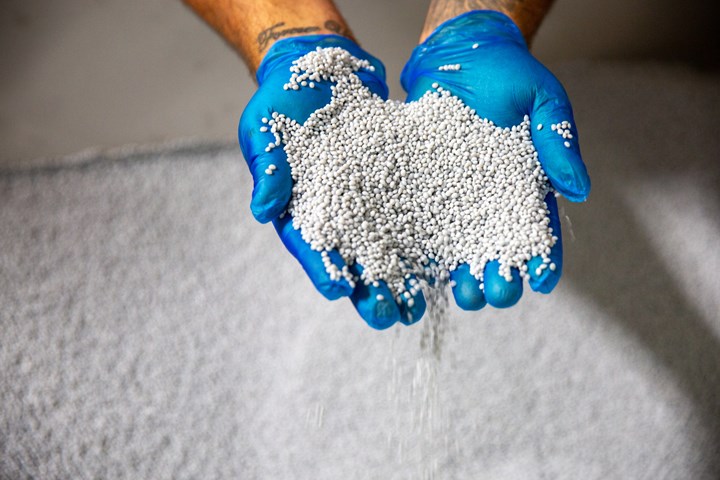CG Roxane's San Bernardino rPET Facility Marks First Year of Production
CG Roxane’s CEO and President Ronan Papillaud discusses the company's journey into rPET production.

The company is currently using a minimum of 50% rPET at its West Coast plant.
CG Roxane, the maker of Crystal Geyser Alpine Spring Water, is celebrating its first year of production at its San Bernardino rPET facility. The new plant has allowed the company to uphold its commitment to produce bottles using a minimum of 50% rPET at the location, with the goal of using 100% rPET nationwide in the near future.
CG Roxane’s CEO and President Ronan Papillaud said the company decided to go this route in order to take care of what it produces—taking it back and turning it into a new product.
The company has been thinking about advancing rPET for the past 10 years. However, it wasn’t until the China National Sword campaign, which banned the import of solid waste, where it opened up the opportunity for CG Roxane to get more involved with recycling.
“The look of the product changes slightly with the increase of rPET—we can’t go too fast, and we must get the customer used to it.”
The San Bernardino plant has capacity to process about 35 million lb/yr of rPET, equivalent to about 1 billion PET bottles, coming mostly from the greater Los Angeles area. The company also plans to open an additional rPET plant on the East Coast sometime in the future.
While the facility has the ability to produce 100% rPET, Papillaud said they set the goal of 50% rPET as a way to get everyone on board.
“The look of the product changes slightly with the increase of rPET—we can’t go too fast, and we must get the customer used to it,” Papillaud said. “It’s still super clear but there is some gray, and the gray will increase as our target is 100%. But our company goal is to go up to 100% rPET as soon as we can.”
While virgin material is still much cheaper than recycled PET, Papillaud said the company believes in sustainability for the long haul.
“Yes, there is a cost to the bottom line, but someone has to pay for it and that has to be us,” he said. “It’s everyone’s job to do their part—we’re doing our part because we have invested in a facility that can take every bottle we sell and turn it into a new bottle. But everyone else has to do their part, including the consumer. The consumer must do its part or otherwise everything falls apart.”
Related Content
-
Inside the Florida Recycler Gearing Up to Take on Scrap at NPE2024
Hundreds of tons of demonstration products will be created at NPE2024 next spring. Commercial Plastics Recycling strives to recycle all of it.
-
Evolving Opportunities for Ambitious Plastics Recycler
St. Joseph Plastics grew from a simple grinding operation and now pursues growing markets in recycled PP, food-grade recycled materials, and customized post-industrial and post-consumer compounds.
-
SD Polymers: 'One-Stop Solution for Mechanical Recycling'
‘Passionate’ recycler invests in people and technology to meet commitment to innovative, sustainable solutions for its processor customers.
















